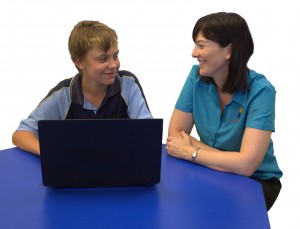
Procedures are the step by step descriptions of how to do something. Being able to retell and write procedures is important in developing the skills needed in science and some other subjects and in understanding and writing non-fiction. Earlier we looked at developing procedures in preschool children. Now we will look at developing these skills in school aged children.
Procedures help children learn:
- sequencing skills
- how to structure oral and written texts
- how to use time and sequential concepts such as first, next, last
- how to use sequential and time conjunctions such next, after, later, when
Procedures can be fun for students to learn because they can be based around real life, hands on activities. Technology such as digital cameras and printers mean it is now quicker, easier and cheaper for parents, teachers and support workers to make their own personalised resources to help students learn these skills.
Procedures can include:
- daily activities such as getting dressed, brushing your teeth, having a bath
- simple food preparation and cooking activities
- craft activities
- construction activities
- outings, excursions, sporting activities
- travelling to a familiar place
- special events
- science experiments
- hands on activities such as in technology or home economics
As you do the activity with the student:
- Start with a simple activity and make the activities longer and more complex as the student develops.
- Talk about what you are going to do and what the steps are.
- Do the activity together talking about each step as you do it and what will come next
- At the end list each step that you did then ask your child to tell you the steps
- If you have made some visuals (see below) help your child to use these to sequence and describe what they have done
- Record your procedure with movies, photos, a power point display or writing.
- Share your procedure and talk about what you have done with someone else for extra practice
Use visuals to help your child learn to sequence the steps and describe them.
- Take some photos of your child as they do an activity, print out the photos and use these for your child to put in order and retell what they have done.
- Try making short movie clips, playing them back, stopping at each step and talking about what is happening.
- Make your photos into books and write the words for each step to go with each picture
- Make your photos into a power point or slide show to look at on your computer and perhaps record a voice over with your child describing what is happening.
- Use a planner to plan out the steps in your procedure before you do your activity or write your procedure.
- For children who find it hard to sequence ideas, write out each step onto a separate strip of paper as they think of it then put the strips in order and fill in any gaps before writing.
- Type your procedure onto the computer then use cut and paste to get the steps in order, edit and fill in any missing parts.
Activities for practising procedures:
Involve your child in daily activities. Make a habit of telling your child what you are going to do and what the steps are before you do it, and involve them in the process “I am going to make soup, first I will brown the onions, then add the stock and vegetables, then cook for an hour, and then we can eat it, what steps could you help with?”
Ask your child to tell you how they did things, such as if they have done a science experiment or made something at school “You had a science experiment today, tell me all the things you did”.
Make a family cookbook with your favourite recipes. Write out the steps to make your families favourite foods, add some photos of your child making the recipes and print them out as gifts for family and friends. You could also make some crafts for gifts for family and make a procedure about how you made it to make the gift extra special.
Take photos of special events such as outings and make these into book or power point display. Help your child write what happened and encourage them to share these with others.
Share with your child books that show procedures such as kids cook books, craft books, science experiment books, how to books and other non-fiction books. Choose some fun activities to work through. Record your creations as you do them with movies and voice overs, photos with captions or in writing.
Involve your child in activities where you have to work out how to do something such as assembling a bookshelf or fixing the car. Let them help you read and the instructions and follow them step by step.
Involve your child in planning family activities. Start with simple things such as planning a shopping trip, what you need to buy, where you need to go and in what order. Move onto more complex things such as planning a family holiday together, looking at all the things you need to plan, book, pack etc. Help them record the lists and procedures you all need to work though.
We hope you have fun learning procedures together. For more language activities and ideas visit the browse our website to see how we can help.
Related posts:
Developing story writing
Verbs and conjunctions
Visuals for older kids
Preschool procedures
Developing grammar
Related Blog Posts
If you liked this post you may also like:
Tips for handwriting
Why kids need play!
Why books for christmas
Holiday recounts



